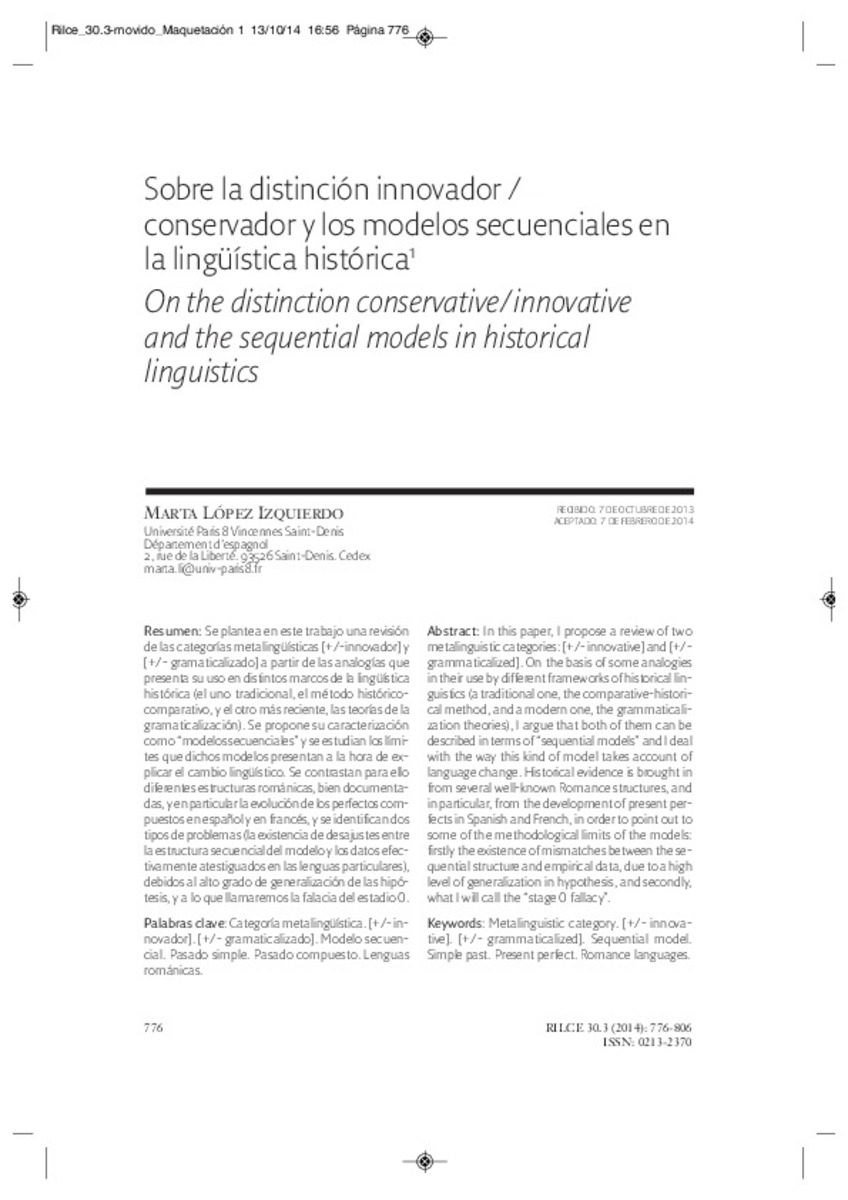Sobre la distinción innovador / conservador y los modelos secuenciales en la lingüística histórica
Other Titles:
On the distinction conservative/innovative and the sequential models in historical linguistics
Keywords:
Materias Investigacion::Filología y Literatura
Categoría metalingüística
[+/- innovador]
[+/- gramaticalizado]
Modelo secuencial
Pasado simple
Pasado compuesto
Lenguas románicas
Metalinguistic category.
[+/- innovative].
[+/- grammaticalized]
Sequential model
Simple past
Present perfect.
Romance languages
Lingüística
Publisher:
Servicio de Publicaciones de la Universidad de Navarra
Citation:
López-Izquierdo, M. (2014). ""Sobre la distinción innovador / conservador y los modelos secuenciales en la lingüística histórica"", Rilce, vol. 30, n.3, pp. 776-806.
Statistics and impact
0 citas en

0 citas en

Items in Dadun are protected by copyright, with all rights reserved, unless otherwise indicated.







